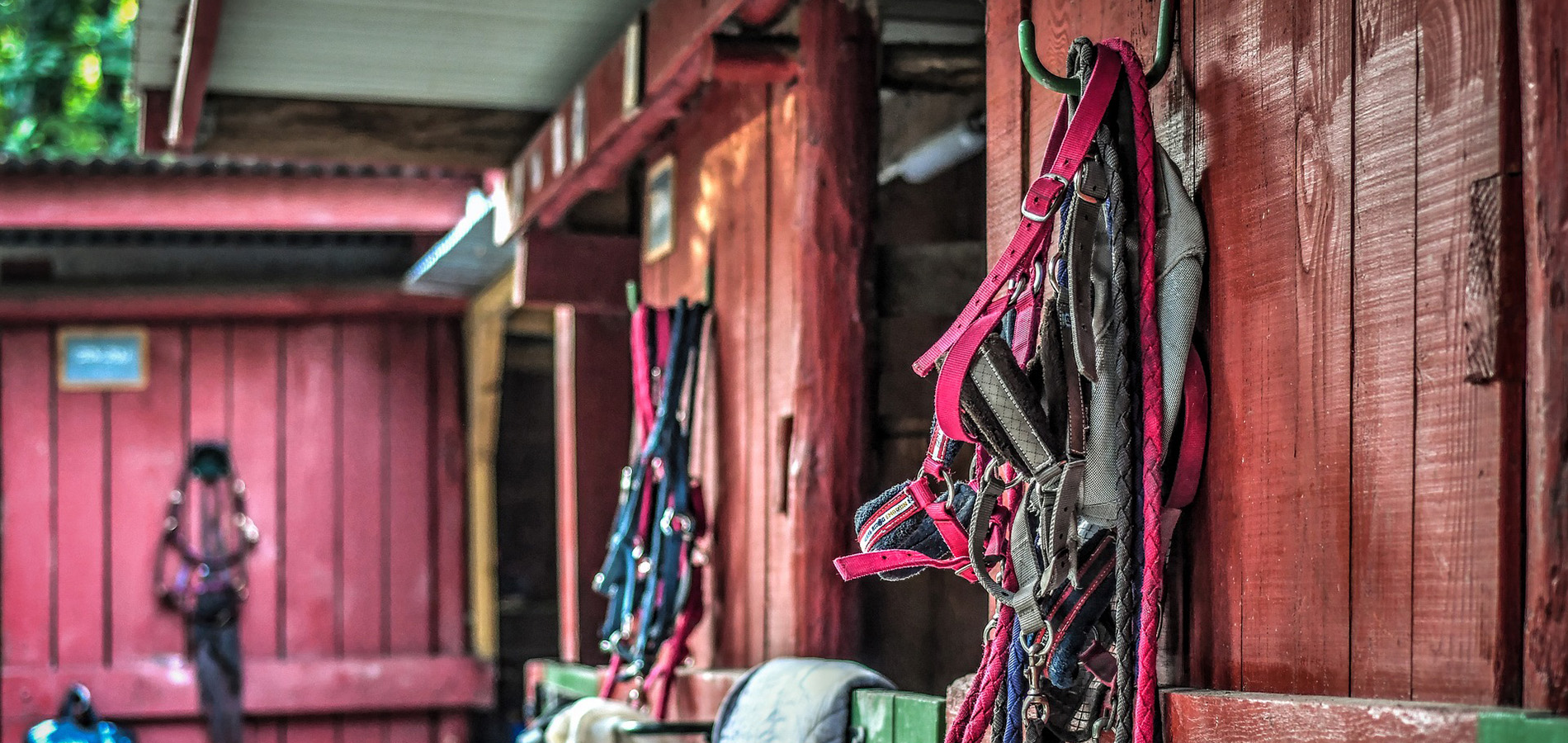Cleaning and Disinfection for Barn Managers

Any potential source of pathogen transmission must be cleaned and disinfected regularly. This includes shared areas and equipment, stalls, vehicles, bathrooms or lounges, and people. Clean off all organic material using soap/detergent and water. Let it dry before applying a disinfect. All disinfectants should be used according to the manufacturer’s instructions.
Anyone who travels to other properties with horses, such as veterinarians, farriers, feed delivery trucks, etc., should clean and disinfect their trucks and tires between each farm. A scrub brush with soap and water should be used, the vehicle allowed to dry, and before applying a disinfectant. On difficult-to-clean vehicles, using a disinfectant that is not inactivated by organic material is a good idea. Veterinarians and farriers should also disinfect their tools between farms and horses. If their disinfecting protocol is not obvious, make sure to ask about it to ensure your horses are getting proper care.
Tack cannot be easily disinfected, but still take caution with this equipment. Clean it often and dry it in the sun, as sunlight can kill or inactivate some pathogens.
Clean footwear is a priority for keeping the farm safe from pathogens. Before entering the quarantine area, any visitor to the farm, including horse owners, must clean their boots, change into rubber boots, or wear shoe covers if they have worn their shoes to other equine facilities. Footbaths should be placed just outside the quarantine area for easy access. A bleach solution can be used in the footbath (1-part bleach: 10 parts water), but there must be no organic material on the shoes. As a result, a disinfectant that is not inactivated by organic material, such as phenols, may be more effective (see last paragraph of this section). Also include scrub brushes with the footbath to ensure the disinfectant reaches all parts of the shoes. Change footbaths regularly, especially if they become contaminated with organic material. If footbaths are not possible or feasible for some reason, use disposable shoe covers. Another option for the quarantine area is to locate a pair of rubber boots or over-boots that are only used for that horse/the quarantine area just outside the area.
Once a stall is used and the horse then leaves, whether in main barn or the quarantine area, thoroughly clean and disinfect the stall before another horse uses it. Trailers follow this same logic. For specific instructions on disinfecting trailers and stalls after use, reference pages 11-13 in UC Davis’ Horse Biosecurity guide (PDF). Once you have decided on cleaning protocols for the facility, write them down and keep them handy for quick reference.
Knowing which disinfectants to use in various situations can be very helpful, especially when a horse is identified as infectious. Bleach should be mixed 1:10 with water, but organic material will inactivate it. However, One Stroke Environ and Tek-trol (phenols) can be used when organic matter is still present, making them good options for truck tires, trailers and footbaths. If there is not a sink or clean running water nearby, gel hand sanitizer is a good option for handwashing. If you are going to be using other spray disinfectants, make sure they work to kill or inactivate bacteria and viruses. Sunlight can also be used to disinfect equipment that cannot be cleaned with bleach or other sprays, such as leather tack.
Resources
Cleaning and Disinfection Key Points
- Wash equipment and barn areas with soap and water and let dry fully before applying disinfectant per the manufacturer’s recommendations.
- Visitors and anyone coming to your farm must clean and disinfect their cars and tires if they have visited any other farms with horses.
- Place tack or anything else to which you cannot apply disinfectant in the sun to kill pathogens.
- Use footbaths at the entrance to the quarantine area.
- Clean and disinfect stalls between horses using them.
- Learn which disinfectants will be best in each situation. Bleach is inactivated by organic material.
